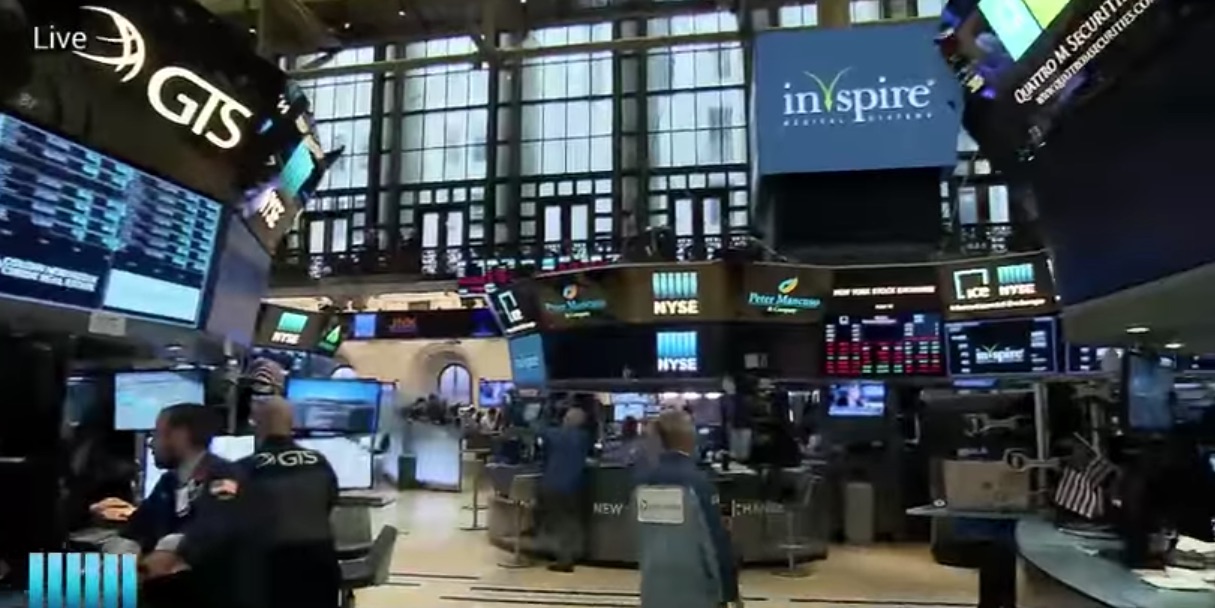Global Warming in the Eemian of the Quaternary
Will this presidential election be the most important in American history?
Much is known about the history of Earth’s climate – but few people know it. And that is not surprising since this knowledge poses a direct threat to the powerful climate change alliance in politics and green industry.
In Ice Age 5 I talked about Earth as a volcanic, wet and warm planet that for most of its existence had no polar ice. But for the last 2.58 million years Earth has been in an ice age – the fifth since Earth formed. Compared to the other four ice ages our current ice age, the Quaternary, is still young.
An ice age is characterized by polar ice, alpine glaciers and continental ice. However, the amount of ice during an ice age varies greatly. An ice age has cold intervals with lots of ice – glaciations – and not so cold intervals with less ice – interglacials.
Living in an ice age is not as bad as it sounds as long as you happen to live during one of its not-so-icy stages. So far our ice age has seen seven such interglacial periods. You are living in the seventh’s. It began around 12,000 years ago and is called the Holocene Interglacial. Nobody knows when it’s going to end.
During an interglacial the surface and atmosphere of the Earth warms to such an extent that continental ice sheets, polar ice sheets and alpine glaciers retreat significantly but do not disappear.
The glaciation that preceded our current interglacial is called the Wisconsin Glaciation and ended approximately 12,000 years ago. It lasted a long time – almost 100,000 years from 110,000 years ago to about 12,000 years ago.
You are lucky to live within the Holocene Interglacial since this is the time when human civilization began. Without the climatic conditions of the Holocene the history of humankind during the last 12,000 years would have been quite different.
It is hard for animals and plants alike to make it through an ice age. Cold kills. But in warm periods life thrives. We are lucky to be around at all. During the Wisconsin Glaciation two out of three hominid species became extinct. They did not survive the freezing cold weather. The homo neanderthalensis, for example, disappeared between 50,000 and 30,000 years ago. But we made it – or at least some of us did. It is estimated that only around several thousand humans lived towards the end of the Wisconsin Glaciation. However, with the beginning of our current interglacial the Earth’s population exploded and reached approximately 5 million within a few thousand years.
In order to better understand our own interglacial it is helpful to look at former warm periods within our current ice age. If we go back in time to the end of our current interglacial, the Holocene, and further back through the entire 100,000 years of the Wisconsin Glaciation we reach the Eemian Interglacial, the last interglacial before our own. The Eemian ended around 114,000 years ago after having lasted roughly 16,000 years.
This interglacial is called by different names in different countries: it is known as the Ipswichian Stage in the UK, as the Sangamonian Stage in North America and as the Riss-Würm Interglacial in the Alps.
The Eemian is of particular interest to us humans since it is the time in which the homo sapiens evolved in East Africa. So what was the climate like in this interglacial right before our own?
Overall, Eemian’s climate was quite similar in its stability and temperatures to our Holocene Interglacial. At its peak about 125,000 years ago, however, it was warmer and wetter than today. For example, trees grew in northern Norway above the Arctic Circle – today there is only tundra. The Hippopotamus lived in the rivers Rhine and in the Thames. In North America, the prairie-forest boundary in the Great Plains was situated further West in the vicinity of Lubbock, Texas. Today the boundary is near Dallas.
Sea level was higher than today and the temperature was about 2° warmer at the equator and up to 6° warmer at the poles. Australian Geology Professor Ian Plimer describes the Eemian in his recently published book “Heaven and Earth”: “Global ice volume was low and sea level was 4 to 6 meters higher than now. Tree lines followed the glacier retreats and expanded to high latitude areas and to mountains. Much low-lying land became covered by warm shallow seas … high latitude tundra was replaced with trees, and thick forests again covered continental Europe, the UK and elsewhere in the Northern Hemisphere. … This warming was global, sea level in Western Australia was at least 3 meters higher than at present and coral reefs thrived between 128,000 and 121,000 years ago in areas where water temperature is now far too cool for coral.”
What about the Eemian’s atmospheric carbon dioxide levels? They were about 275 ppmv (parts per million by volume) and at its peak 290 ppmv (we know this from air bubbles trapped inside Greenland’s ice that dates from the Eemian). Earth’s current CO2 level is 391 ppmv. Anthropogenic global warming protagonists assert that carbon dioxide drives climate by causing an increase in temperature. How would they explain that the Eemian at its peak had significantly higher temperatures with lower CO2 levels?
The high temperatures of the Eemian’s peak did not result in disaster. Instead, temperatures slowly decreased until the beginning of the long Wisconsin Glaciation. 100,000 years of glaciation followed the comparatively short period of warmer weather during the Eemian.
This is how Ian Plimer sums up our last interglacial: “…the polar ice sheets did not completely melt. Polar bears did not become extinct. There was no runaway greenhouse effect or ‘tipping point’. Human populations adapted. Climate did what climate always does: change. This interglacial warm period was not driven by high atmospheric CO2. Orbital and solar mechanisms were the driving forces.”
Mankind, it seems, is not nearly as powerful as some like to think. Neither do we move heaven and Earth nor are we able to predict how heaven and Earth will be moved in the future. But at least we are creatures capable of understanding our own limitations – unless hubris, ambition or fear cloud our thinking.
Part 3 “Climate Variations during the Holocene Interglacial” will follow.









